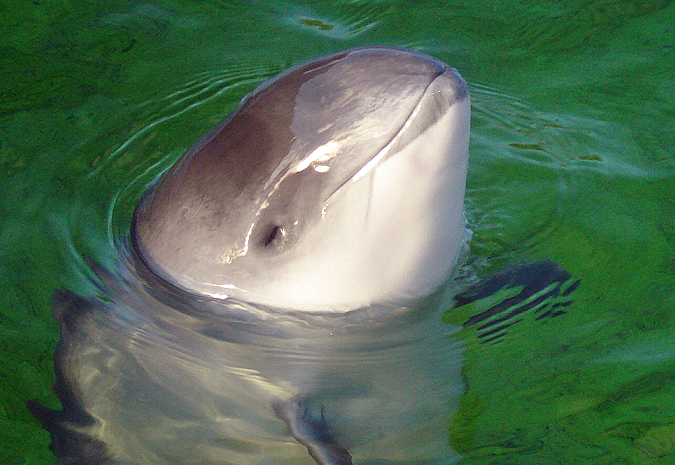Harbour porpoise

Status
Native
Population
386,000
Scientific name
Phocoena phocoena
The harbour porpoise is the smallest and most common cetacean recorded in British and Irish waters. They have a dark grey back with a small, triangular dorsal fin, and are generally seen in small groups (of less than ten individuals). Unlike many dolphin species, harbour porpoises rarely leap out of the water or bow-ride, although they sometimes approach slower boats. They keep a low profile in the water, but their small size and characteristic rolling swimming style make it easier to recognise.
Harbour porpoise have virtually disappeared from the Baltic and are almost extinct in the Mediterranean. Populations in the Black Sea, North Atlantic and North Pacific are considered by some to be separate subspecies.
Length: Usually about 1.5m but can be up to 2m
Weight: 40 – 75kg (females are slightly larger than males on average)
Lifespan: Few survive longer than 12 years but can reach 24 years
Reproduction
Mating occurs from April to September, with a peak in July and August, and single calves are born from May to August the following year. Mothers may produce milk for up to eleven months, but calves will start to feed independently at two or three months of age.
Diet
Small schooling fish, including herring and whiting, and cuttlefish.
Habitat
Commonly found in coastal bays and estuaries, and around headlands, preferring water 20-100m deep.
Predators
Sharks and killer whales.
Threats
Accidental capture in fishing nets (they are particularly vulnerable to bottom-set nets as they forage near the seabed), pollution, declining fish stocks and hunting.
Status & conservation
Native. Populations in the Black Sea and Baltic Sea are listed by the IUCN as Endangered and Critically Endangered respectively, and it is a UKBAP priority species.
Population size & distribution
Population 386,000 (continental shelf seas from southwest Norway to Atlantic Portugal). Mostly present off the western coast of Wales, in Cardigan Bay, off the north east of Scotland in the Moray Firth, and among the Western Isles.
Did you know?
Porpoises can be distinguished from dolphins by their shorter face, which lacks a beak. Their teeth are spade-shaped, compared with the cone-shaped teeth of dolphins.
